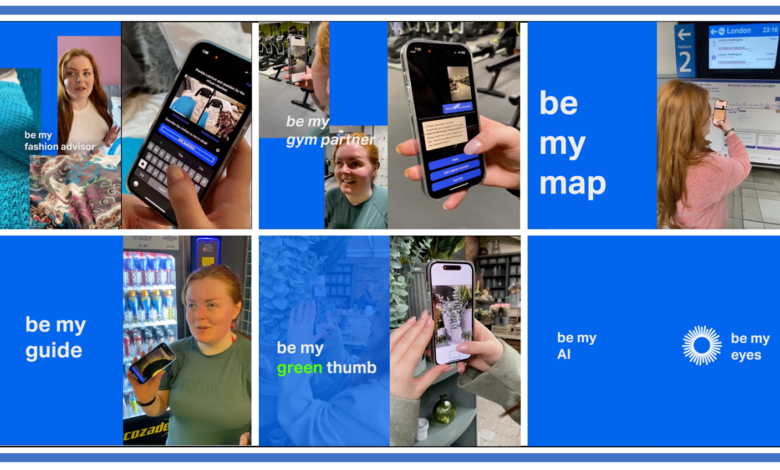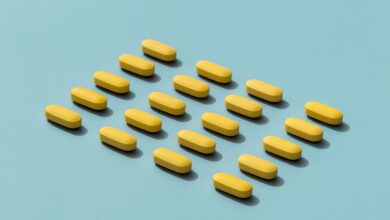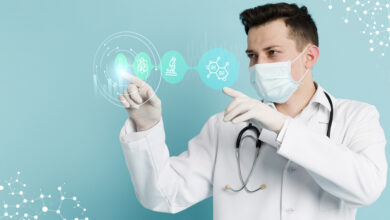“Visual Health AI”: Be My Eyes App Links to Microsoft Disability Answer Desk With Stunning Results

If you are ever on Jeopardy and get asked about Alexander Graham Bell – it turns out that his inspiration for inventing the telephone grew out of his work with the deaf community. In fact, many inventors throughout history have been focused on serving people with specific disabilities and developed breakthroughs that also benefited the rest of humankind. From the telephone, to curb-cuts, to bendy straws, to oversized kitchen grips, to audiobooks – we all benefit from these inventions.

Along these lines, the Be My Eyes app can certainly be added to this illustrious list of disability-inspired breakthroughs as the relatively new app is using GPT powered Visual Health AI to unlock incredible service levels for sight-impaired users.
The Be My Eyes story started in Denmark in 2012 with Hans Jørgen Wiberg, a Danish furniture craftsman, who is visually impaired himself. Through his work at ‘The Danish Association of the Blind’, he recognized that blind or low-vision people often needed a little assistance to solve everyday tasks. However, it wasn’t until a blind friend told him that he used video calls to connect with family and friends, who could help him with these tasks, that Hans Jørgen got the idea for Be My Eyes.
Fast forward 10+ years, and Be My Eyes continues to leverage the latest technology to serve those who are vision impaired. This week – they announced results from a new collaboration with the Microsoft Disability Answer Desk that added AI-driven sight recognition to help desk calls. While the results below are indeed stunning – it is not difficult to imagine how the combination of AI vision + help desk applications will soon lead to an entire shift in how field service support is handled across an incredible range of industries. In healthcare – from first responders in EMT situations, to answering basic home health questions, to identifying pills – there are countless situations where having AI-powered “smart vision” in the palm of your hand will bring incredible benefits.
Here are the initial results with the tech-focused Microsoft rollout:
This is the first use of AI accepting image inputs to augment traditional customer service for people with disabilities. In fact, the deployment, which has rolled out globally, is producing stunning early results that meet what Be My Eyes refers to as the 3S Success Criteria™:
- Success: a 90% successful resolution rate by Be My AI™ for Microsoft customers who try it. Put another way: only 10% of consumers using AI interactions are choosing to escalate to a human call center agent.
- Speed: Be My AI™ solves customer issues in one-third the time on average compared to Be My Eyes calls answered by a live Microsoft agent (4 minutes on average for Be My AI vs. 12 minutes on average for live agent support).
- Satisfaction: customer satisfaction ratings have improved with the implementation of Be My Eyes in Microsoft’s Disability Answer Desk with interactions averaging 4.85 out of five stars.
In case you think this is just a passing fad – here is a quick list of existing healthcare apps that we were able to find with GPT-4. Some are already using Visual Health AI, but we believe most – if not all of these apps will be further enhanced by the use of real-time cameras directly linked to Visual Health AI technology.
Dermatology
- Kara AI Skin Expert Assistant: An AI-driven skincare tracker that analyzes skin’s physical attributes, tracking changes over time.
- Skin Image Search™: Offers instant AI evaluation of skin conditions based on a vast image database.
- AI Dermatologist: A prediagnostic app for monitoring skin health and detecting unusual skin conditions.
- Mole Checker & Skin Scanner: Uses AI for skin self-exams and documentation with a 3D skin-map.
- Miiskin: AI-powered skin tracking app for mole checking and skin monitoring, endorsed by the Skin Health Alliance.
Weight Loss
- myfood24: A robust platform for accurate tracking and monitoring of dietary intake with in-depth nutrition analysis.
- MyFitnessPal: Offers comprehensive food, exercise, and calorie tracking with a vast food database.
- MyDietAnalysis: Provides access to an extensive database of foods, enabling hands-on diet tracking and nutrition analysis.
- Nutrium: A nutrient analysis software designed for dietitians and nutritionists to improve dietary recommendations.
Oncology
- Cancer.Net: Tracks symptoms, appointments, medications, and provides information on over 120 types of cancer.
- CareZone: A popular app for cancer-related tracking, including symptoms, medications, and appointments.
- eSyM Tool: A symptom management tool for cancer treatment, helping in tracking patient symptoms between clinic visits.
- Wave Health App: An all-in-one health and symptom tracker specifically for cancer and chronic illness.
Epilepsy
- SeizAlarm: A seizure detection app that uses repetitive motion and heart rate monitoring to alert emergency contacts.
- Embrace2: A wearable device with high accuracy for at-home seizure alerting.
- Epipal: Offers seizure detection with alerts and support for managing epilepsy.
- Seizure Alert – My Medic Watch: Detects seizures using smartwatch sensors and sends automatic alerts to caregivers.
Diabetes
- Swift Skin and Wound app: An app focusing on consistent monitoring of diabetic wounds.
- MyFootCare: Engages users with diabetic foot ulcers in self-care through progress monitoring and reminders.
- CARES4WOUNDS: A wound care imaging, assessment, and management system using AI-assisted mobile app technology.
Primary Care
- Hoku: An AI health assistant providing personalized health recommendations and support.
- MayaMD: A digital AI health assistant that uses clinical algorithms for diagnostic self-triage.
- List of AI Assistants: A compilation of various AI health assistants to optimize healthcare.





